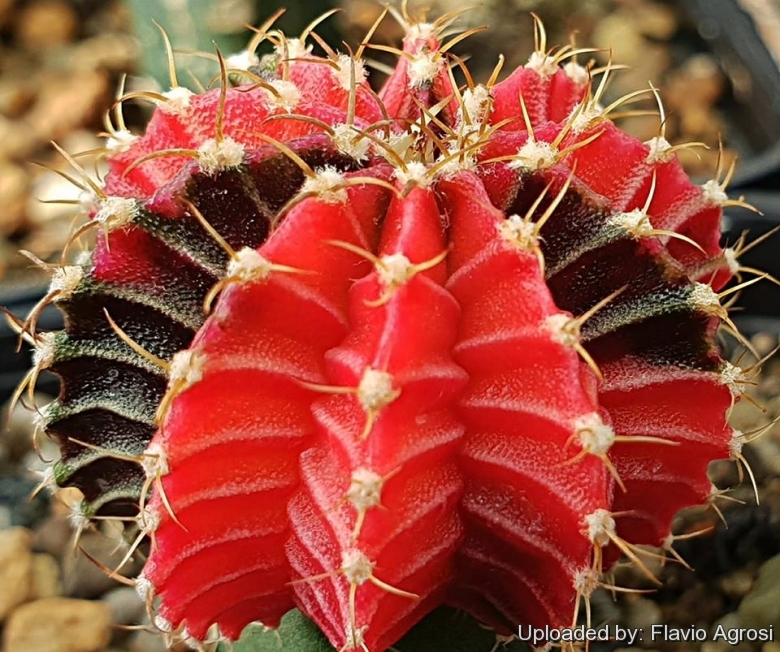Donate now to support the LLIFLE projects.
Your support is critical to our success.
Your support is critical to our success.

Gymnocalycium mihanovichii "NISHIKI"
Synonyms:
See all synonyms of Gymnocalycium mihanovichii
back
Accepted name in llifle Database:Gymnocalycium mihanovichii (Frič ex Gürke) Britton & Rose
Cactaceae (Backeberg) 3: 153. 1922 [12 Oct 1922]
Synonymy: 12
- Gymnocalycium mihanovichii (Frič ex Gürke) Britton & Rose
- Echinocactus mihanovichii Frič & Gürke
- Gymnocalycium mihanovichii var. angusto-striatum Pazout
- Gymnocalycium mihanovichii var. fleischerianum Pazout
- Gymnocalycium mihanovichii var. melocactiforme Pazout
- Gymnocalycium mihanovichii var. nigrum Y.Itô
- Gymnocalycium mihanovichii var. pazoutianum Moser & Valnicek
- Gymnocalycium mihanovichii var. piraretaense R.Blossfeld ex Pazout
- Gymnocalycium mihanovichii var. piraretaense f. albiflora Pazout
- Gymnocalycium mihanovichii var. robustior hort.
- Gymnocalycium mihanovichii var. stenostriatum Pazout
- Gymnocalycium mihanovichii f. yrendague Moser
Gymnocalycium mihanovichii var. filadelfiense Backeb.
Kakteenlexikon 170. 1966 nom. inval. (Art. 8.2)
Synonymy: 2
- Gymnocalycium mihanovichii var. filadelfiense Backeb.
- Gymnocalycium mihanovichii var. piraretaense f. filadelfiense Backeb. ex Pazout
Gymnocalycium mihanovichii var. heesei
Gymnocalycium 42 (1978)
Accepted name in llifle Database:
Gymnocalycium mihanovichii var. melanum hort.
Katalogname in Schneekloth-Liste
Accepted name in llifle Database:
Gymnocalycium mihanovichii var. roseiflorum
Succulenta (Netherlands) 18:166, 1936 Author: van den Thoorn nom. inval. (Art. 36.1)
Accepted name in llifle Database:
Gymnocalycium mihanovichii var. rysanekianum Pazout
Friciana 5(35): 18-19, 1965
Synonymy: 2 Accepted name in llifle Database:
Gymnocalycium mihanovichii var. stenogonum Frič & Pazout
Kakt Listy 16(10): 109-159
Synonymy: 4
- Gymnocalycium mihanovichii var. stenogonum Frič & Pazout
- Gymnocalycium mihanovichii var. chloristictum F.Ritter
- Gymnocalycium mihanovichii cv. Nishikii hort.
- Gymnocalycium mihanovichii var. friedrichii f. nishikii hort.
- Gymnocalycium mihanovichii var. nichikii hort.
- Gymnocalycium mihanovichii var. nishikii hort.
- Gymnocalycium mihanovichii cv. Hibotan hort.
- Gymnocalycium mihanovichii var. friedrichii f. Rubra hort.
- Gymnocalycium mihanovichii var. rubrum hort.
- Gymnocalycium mihanovichii cv. Hibotan f. cristata hort.
back
| Your Actions | |
|---|---|
| Back to Gymnocalycium index | |
| Back to Cactaceae index | |
 |
Back to Cacti Encyclopedia index |









